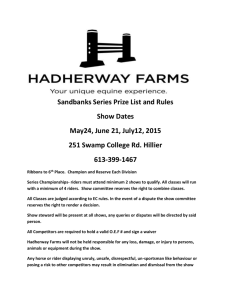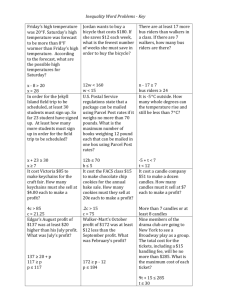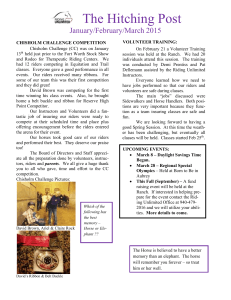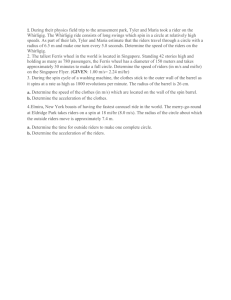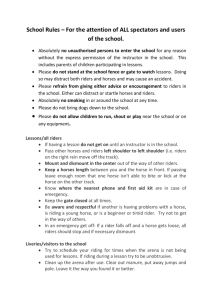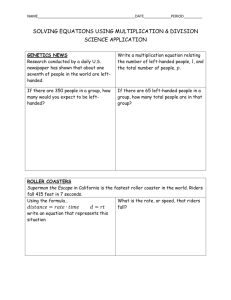Freedom Rides 1961 Freedom Rides were bus rides organized in
advertisement
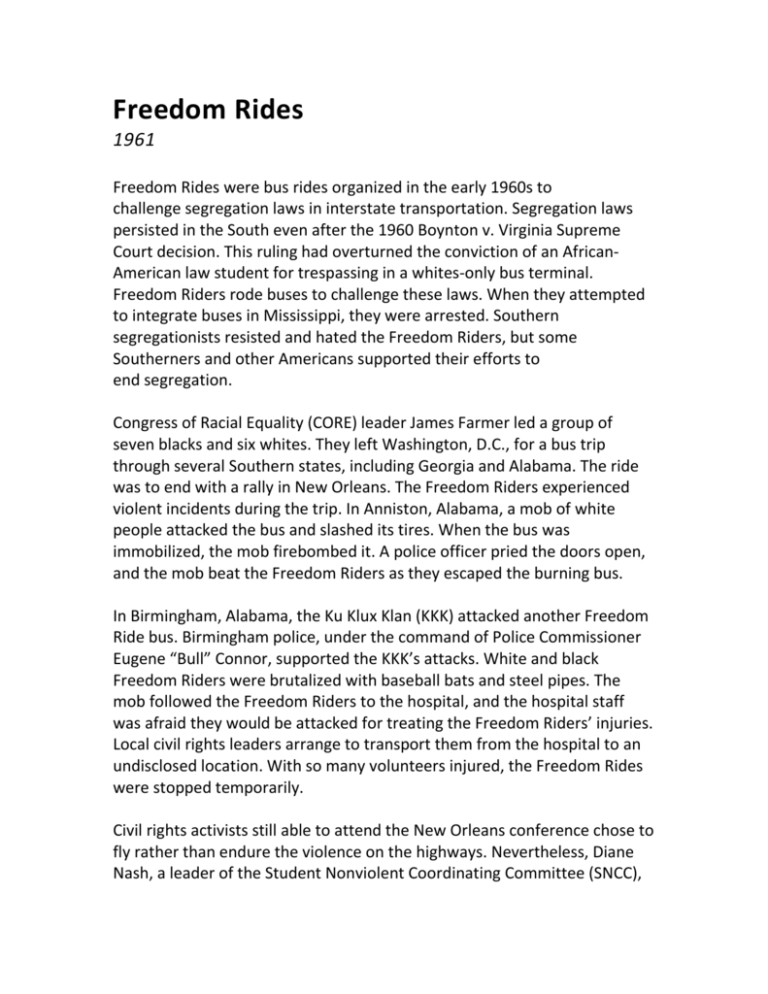
Freedom Rides 1961 Freedom Rides were bus rides organized in the early 1960s to challenge segregation laws in interstate transportation. Segregation laws persisted in the South even after the 1960 Boynton v. Virginia Supreme Court decision. This ruling had overturned the conviction of an AfricanAmerican law student for trespassing in a whites-only bus terminal. Freedom Riders rode buses to challenge these laws. When they attempted to integrate buses in Mississippi, they were arrested. Southern segregationists resisted and hated the Freedom Riders, but some Southerners and other Americans supported their efforts to end segregation. Congress of Racial Equality (CORE) leader James Farmer led a group of seven blacks and six whites. They left Washington, D.C., for a bus trip through several Southern states, including Georgia and Alabama. The ride was to end with a rally in New Orleans. The Freedom Riders experienced violent incidents during the trip. In Anniston, Alabama, a mob of white people attacked the bus and slashed its tires. When the bus was immobilized, the mob firebombed it. A police officer pried the doors open, and the mob beat the Freedom Riders as they escaped the burning bus. In Birmingham, Alabama, the Ku Klux Klan (KKK) attacked another Freedom Ride bus. Birmingham police, under the command of Police Commissioner Eugene “Bull” Connor, supported the KKK’s attacks. White and black Freedom Riders were brutalized with baseball bats and steel pipes. The mob followed the Freedom Riders to the hospital, and the hospital staff was afraid they would be attacked for treating the Freedom Riders’ injuries. Local civil rights leaders arrange to transport them from the hospital to an undisclosed location. With so many volunteers injured, the Freedom Rides were stopped temporarily. Civil rights activists still able to attend the New Orleans conference chose to fly rather than endure the violence on the highways. Nevertheless, Diane Nash, a leader of the Student Nonviolent Coordinating Committee (SNCC), said violence should not stop the Freedom Rides. She organized a group of students to become the new Freedom Riders. The students were jailed on their first trip to Birmingham. They sang freedom songs while in jail, and exasperated Police Chief Connor. Birmingham police drove the students to the Alabama-Tennessee border and told them never to enter Alabama again. The students were determined to return to Birmingham. It became increasingly difficult for Nash and other Freedom Riders to find a bus to use in their trips south. Many bus drivers were scared of angry mobs and the KKK. With great trepidation, Alabama Governor John M. Patterson promised to protect the bus from the KKK. The Freedom Rides resumed on May 20 with protection from the Alabama State Highway Patrol. The patrolmen escorted the bus from the Alabama state line through Birmingham. However, the highway patrol broke its promise when the bus reached the Montgomery, Alabama, city limits. When the bus reached the terminal in Montgomery, a mob wielding weapons attacked the Freedom Riders. News photographers reporting the event also were attacked, and their cameras and film were destroyed. Ambulances refused to transport injured Freedom Riders to the hospital. African Americans in Montgomery waited for the mob to disperse so they could rescue the Freedom Riders and transport them to a hospital. On May 21, 1961, Freedom Ride supporters met at Reverend Ralph Abernathy’s First Baptist Church to honor the riders. A white mob attacked the church. City and state police attempted to protect the blacks, and federal marshals were mobilized. President John F. Kennedy was prepared to deploy the Alabama National Guard, but Governor Patterson agreed to send them. State police and the National Guard were ordered to protect the Freedom Riders. However, the Riders faced arrest for violating local segregation ordinances. Freedom Riders started another journey. They left for Jackson, Mississippi, on May 24. When they arrived, Riders were arrested for using the “whites only” facilities. The Freedom Riders followed this pattern of arrest to fill the local jails. When the jails filled, the Riders were sent to Mississippi’s Parchman Penitentiary. Riders were jailed with murderers and hardened criminals. Nevertheless, riders continued sing freedom songs to badger their guards. President Kennedy and Attorney General Robert F. Kennedy wanted the Freedom Rides to cease. They favored a cooling-off period. They believed the Freedom Riders had made their point, and more violent confrontations would be counterproductive. African- American civil rights leaders refused to end their protest. They formed the Freedom Riders Coordinating Committee and continued Freedom Rides through the summer. Each ride went through Jackson, Mississippi; and all the Riders would be arrested each time. There were an equal number of black and white volunteers on each bus. At rest stops, the integrated groups sat together at restaurants. This caused restaurant owners to desegregate because they feared losing business. This also focused attention on the arbitrary and unfair nature of segregation. According to segregation laws, skin color separated travelers and determined which travelers were allowed into the bus station and which travelers were forced to wait outside. Finally, the Kennedy administration pressured the Interstate Commerce Commission (ICC) to issue more orders to desegregate public places, such as bus terminals and restrooms. The Freedom Rides were the inspiration for later civil rights groups. After completing the Guided Reading, answer the following questions. Be sure to include textual evidence to support your responses. 1. Freedom Rides began in response to a Supreme Court decision. What was this decision? Why would it inspire Freedom Rides? 2. What was the route for the first Freedom Ride? 3. What dangers did Freedom Riders face in Anniston and Birmingham, Alabama? 4. What happened when the wounded Freedom Riders were transported to the hospital in Birmingham, Alabama? 5. Diane Nash resumed Freedom Rides on May 20, 1961. What was these Freedom Riders’ fate? 6. After the debacle in Birmingham, what provisions were made to protect Freedom Riders? 7. What pattern did the Freedom Riders use when they traveled to Jackson, Mississippi? What was the result? 8. What happened when the Kennedy administration asked the Freedom Riders to stop the Freedom Rides?


